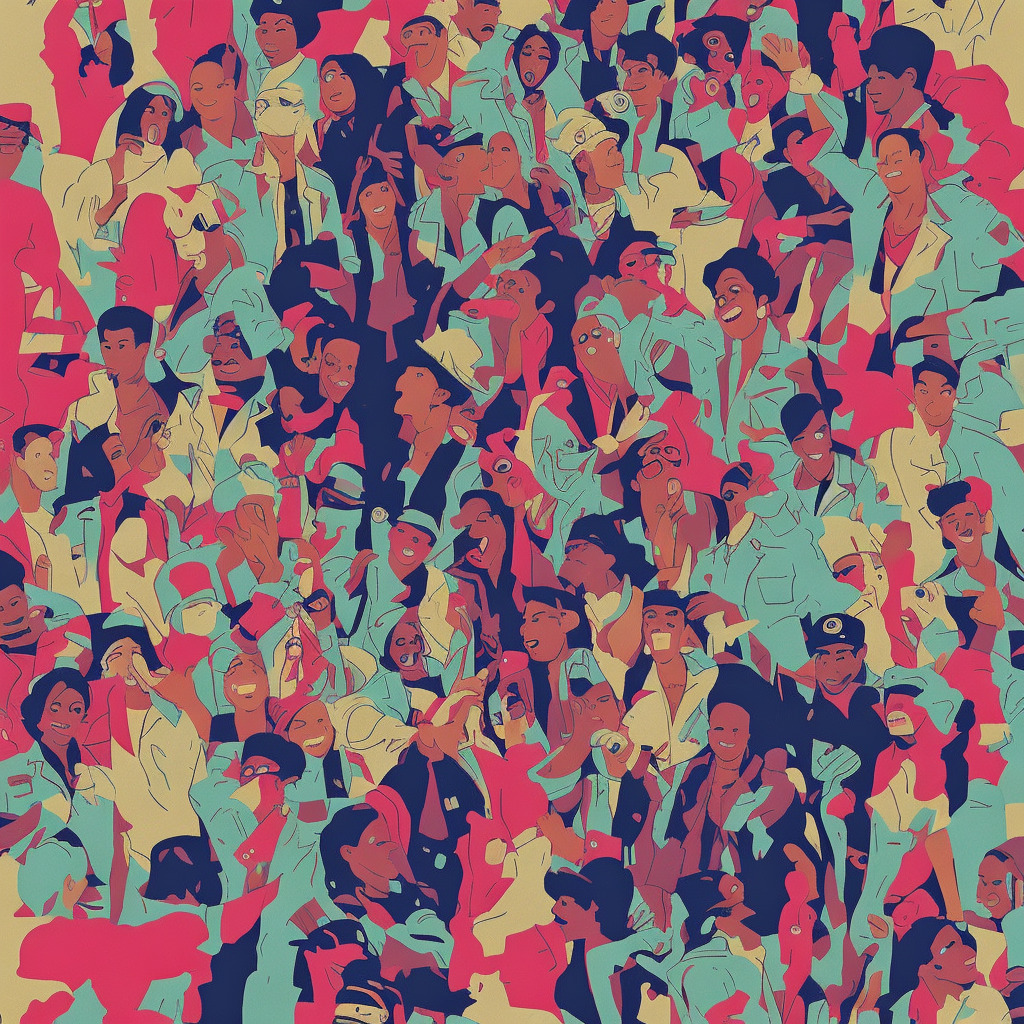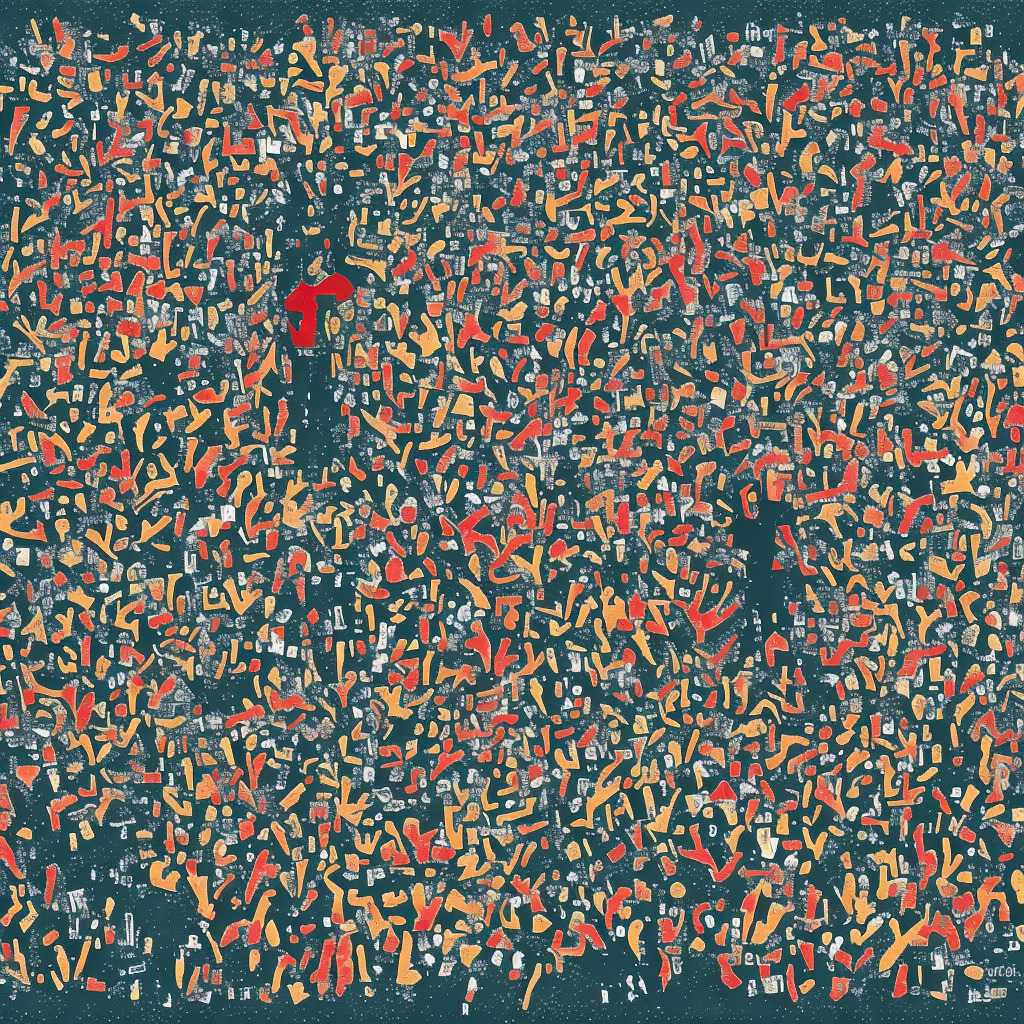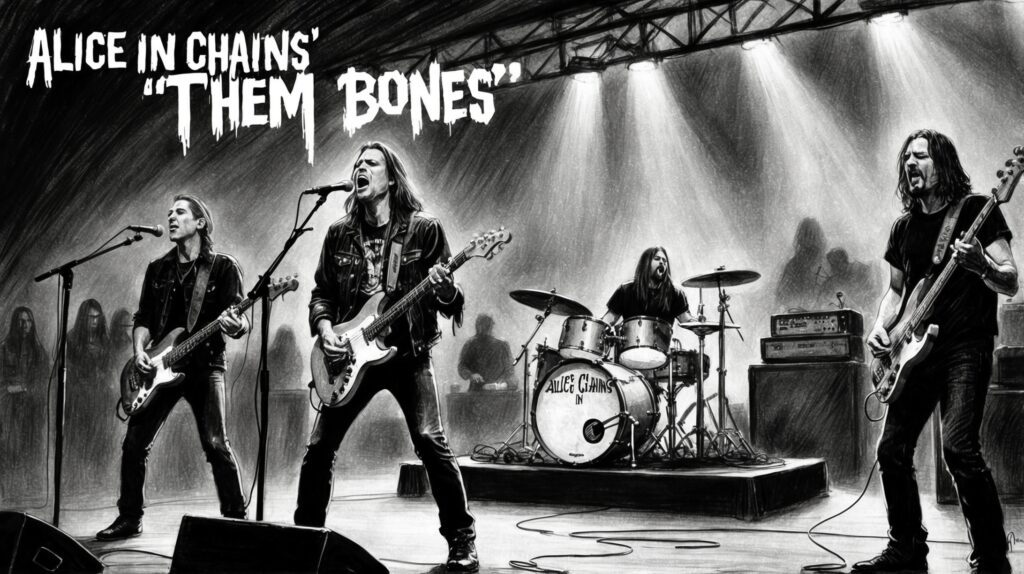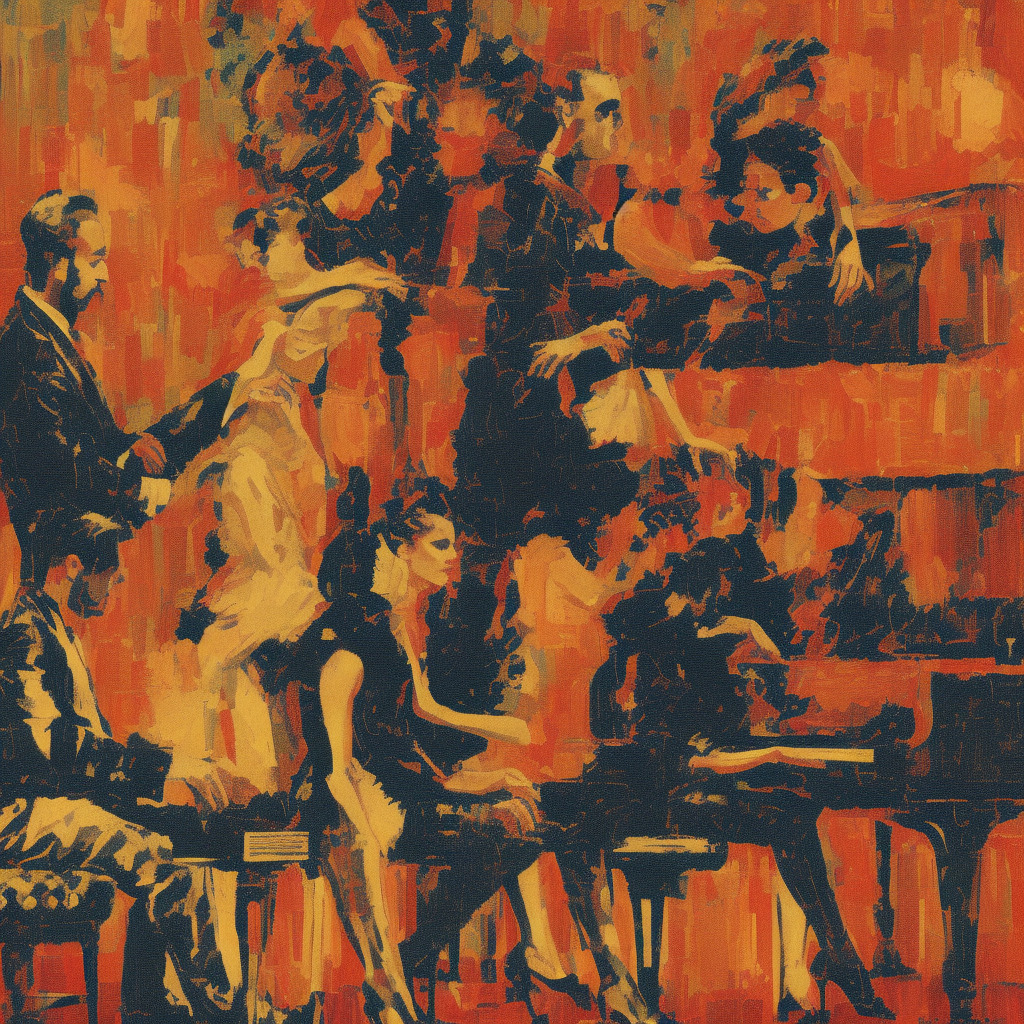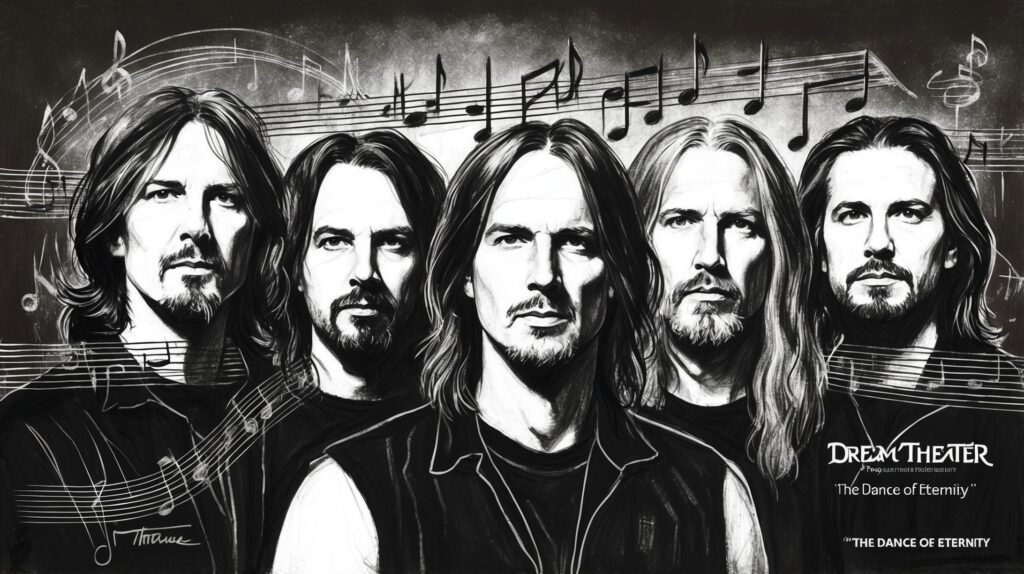🎸Did you know? #U2’s iconic track “One” was born out of a jam session that saved the band from breaking up! 🤯 Feel the unity in every beat! 🎶 #FunFact #MusicTrivia #OneLove #ClassicTune Read about it: tinyurl.com/35bk8r7n
U2’s Timeless Classic: An In-Depth Look at “One”
U2’s “One”: Uniting generations through introspective songwriting and an evolving sound that transcends time, proving their undeniable impact on the rock genre.
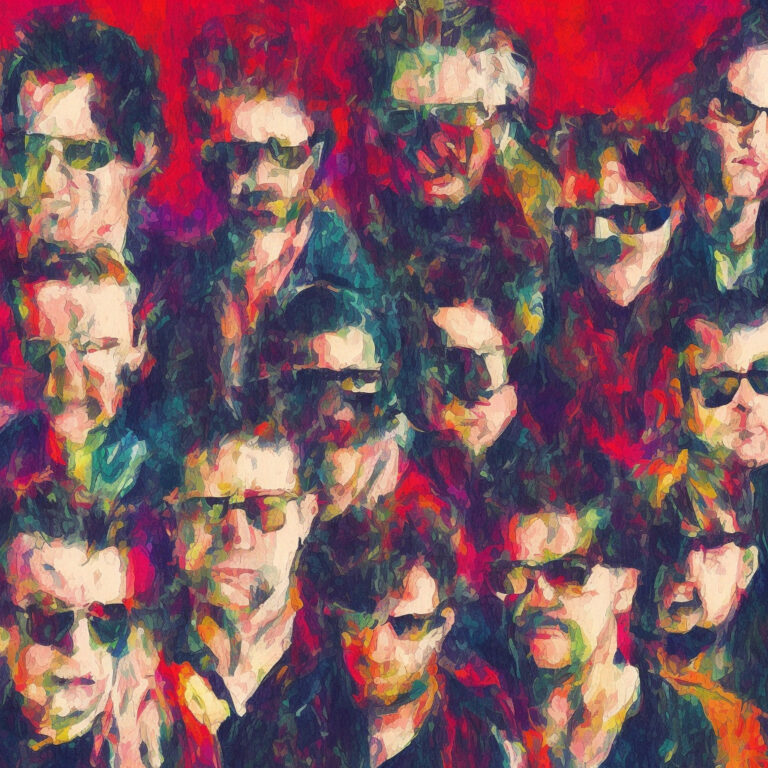
Ireland’s U2 has been dominating the music scene since they first got together in 1976. Comprised of Bono (lead vocals and rhythm guitar), the Edge (lead guitar, keyboards, and backing vocals), Adam Clayton (bass guitar), and Larry Mullen Jr. (drums and percussion), the quartet has continued to captivate generations of fans with their iconic and distinct sound. One of their most notable tracks to do so is “One,” from their 1991 album, “Achtung Baby.”
This song is a testament to the band’s ability to evolve and adapt to the changing musical landscape. “One” is a prime example of their exploration into a more introspective and personal approach to songwriting. The track, written during a tumultuous time for the band, tackles themes of unity, love, and forgiveness. It is said that “One” saved U2 from breaking up, as the band was facing a creative impasse and struggling to find common ground after their experimental 1988 album, “Rattle and Hum.”
U2’s hard work paid off big time, with “Achtung Baby” widely considered one of their finest albums – and one that yielded numerous awards and accolades, including a Grammy for Best Rock Performance. The album’s success further solidified U2’s place at the forefront of the rock genre.
Though the song “One” never achieved chart-topping success, it has become a fan favorite and a staple in the band’s live performances. Furthermore, it has been widely covered by other artists and is often praised for its introspective lyrics and the Edge’s melodic and atmospheric guitar work.
However, critics of U2 argue that the band’s sound can be formulaic, and some contend that their activism can overshadow their music at times. Nevertheless, it is hard to deny the impact that U2 has had on the music industry and the world as a whole for more than four decades.
In conclusion, “One” showcases U2’s ability to create emotionally powerful music that speaks to the human experience. This iconic song has transcended time and remains as relevant today as it was when it was first released. Love them or not, there’s no denying the magnitude of U2’s contributions to the world of rock and their unwavering dedication to make a difference with their artistry.
Charting the Journey of a Timeless Hit
Traversing Time: U2’s “One” – A Global Hit Spanning Decades and Generations 🎶🌍🔄

Released on February 21, 1992, “One” by U2 quickly gained momentum and made a significant impact on music charts worldwide. The song, which was the third track from their seventh studio album, “Achtung Baby,” initially entered the UK Singles Chart at No. 9, showcasing its immediate appeal to the public.
Despite being released in a pre-digital era, “One” managed to stand the test of time and garnered significant chart success. The song reached its peak position on the UK Singles Chart at No. 7 on March 7, 1992, and remained on the chart for a total of 11 weeks. This remarkable achievement made “One” one of U2’s most successful songs in their native Ireland, where it climbed to No. 2 on the Irish Singles Chart.
Across the pond, “One” also left its mark on the US charts. Although it did not make it into the coveted Billboard Hot 100, the song did reach No. 10 on the Billboard Modern Rock Tracks chart and No. 32 on the Billboard Mainstream Rock Tracks chart in 1992. Moreover, “One” peaked at No. 9 on the Billboard Album Rock Tracks chart.
The song’s chart success went beyond the UK and US borders, reaching impressive positions in other countries as well. In Canada, “One” peaked at No. 14 on the RPM Top Singles Chart, while it climbed to No. 5 on the Dutch Top 40 and No. 8 on the Swiss Singles Chart. Furthermore, the song reached No. 6 in Norway and No. 10 in both Australia and New Zealand.
The longevity of “One” is further demonstrated by its performance on the charts even years after its initial release. In the digital era, the song re-entered the UK Singles Chart in 2006, peaking at No. 101, and again in 2011 at No. 91. Additionally, when U2 re-released their album “Achtung Baby” for its 20th anniversary in 2011, “One” experienced a resurgence, reaching No. 38 on the Billboard Rock Digital Songs chart.
In conclusion, the chart success of “One” is a testament to its timeless appeal and U2’s ability to create enduring hits that resonate with audiences across generations. The song’s impact on the music world is undeniable, and its chart performance solidifies its status as one of the band’s most iconic tracks.
A Deeper Dive into the Soul-Stirring Lyrics
Is it getting better
Or do you feel the same
Will it make it easier on you now
If you’ve got someone to blame
You say, one love, one life
When it’s one need in the night
One love, we get to share it
Leaves you, baby, if you don’t care for it
Did I disappoint you
Or leave a bad taste in your mouth
You act like you never had love
And you want me to go without
Well, it’s too late, tonight
To drag the past out into the light
We’re one, but we’re not the same
We get to carry each other, carry each other
One
Have you come here for forgiveness
Have you come to raise the dead
Have you come here to play Jesus
To the lepers in your head
Did I ask too much, more than a lot
You gave me nothing, now it’s all I got
We’re one, but we’re not the same
We hurt each other, then we do it again
You say, love is a temple, love is a higher law
Love is a temple, love is the higher law
You ask me to enter, but then you make me crawl
And I can’t be holding on to what you got
When all you got is hurt
One love, one blood
One life, you got to do what you should
One life with each other
Sisters, brothers
One life, but we’re not the same
We get to carry each other, carry each other
One
The lyrics of “One” by U2 have left a lasting impact on fans and music lovers alike. At first glance, the song appears to address a tumultuous relationship. But delving deeper into the lyrics, one can see that the song speaks about unity, humanity, and the need for understanding and compassion towards one another.
Written during a period of internal strife within the band, “One” was penned in 1991, with its somber tone and profound message reflecting the political climate and uncertainties of the time. The era was marked by the end of the Cold War, the Gulf War, and the ongoing struggle for civil rights and social justice.
The lyrics, “We’re one, but we’re not the same, we get to carry each other, carry each other,” emphasize the importance of recognizing our differences and supporting one another through life’s trials and tribulations. This message of unity and togetherness was not only significant for the band members themselves but also resonated with the broader society of the time.
The powerful declaration, “One love, one blood, one life, you got to do what you should,” serves as a reminder that we are all part of the same human family, and as such, we have a shared responsibility to care for one another. In a time when the world was grappling with political and social upheaval, “One” stood as an anthem of hope and a call for unity amid the chaos.
Thus, with its evocative and thought-provoking lyrics, “One” continues to be an evergreen classic that transcends generations, reminding us all of the power of empathy and the strength to be found in unity.
A Visual Masterpiece: The Music Video for “One”
U2’s “One” music video: a timeless, visually stunning tribute to unity and hope, capturing Berlin’s transformation through Corbijn’s artistic lens.
The music video for U2’s hauntingly beautiful track “One” deserves a special mention in the history of music videos. Created in 1992, the video was directed by the acclaimed Anton Corbijn, who is known for his work with bands like Depeche Mode, Nirvana, and U2 themselves. Corbijn’s artistic approach to presenting the song’s message through powerful imagery contributed to the video’s lasting impact on its viewers.
In the black-and-white video, the band members are shown performing in various locations around Berlin, including the Hansa Studios, where the song was recorded. The iconic backdrop of the Berlin Wall adds a sense of gravitas to the visual experience. The choice of Berlin as a location for the video was no accident, as the city was undergoing significant changes at the time, symbolizing the theme of unity and hope that the song conveys.
Apart from the band’s performance, the video also features footage of a male character, played by the German actor Götz Otto, struggling with his own identity and self-expression. This character is seen wearing high-heeled shoes, a metaphor for the vulnerability and pain felt by those who are unable to express their true selves. The video explores the concept of the struggle for unity and acceptance, both internally and externally.
Another striking element of the video is the appearance of the buffalo, a powerful symbol in Native American culture that represents survival, abundance, and strength. The buffalo’s presence in the video further underscores the themes of unity and hope, while also adding an element of mystique to the visual narrative.
Produced on a modest budget, the “One” music video’s striking imagery and strong message helped it become an integral part of U2’s iconic legacy. The video’s artistic approach and powerful visuals have inspired numerous fan-made videos and YouTube tributes over the years, further solidifying its impact on popular culture.
In conclusion, the music video for “One” is a testament to the power of visual storytelling in enhancing the emotional resonance of a song. Anton Corbijn’s artistic vision combined with U2’s powerful performance makes this video a true masterpiece that continues to captivate audiences even after three decades.
The Mastermind Behind the Masterpiece: U2’s Composer
Diving into the creative genius behind U2’s iconic song “One,” it’s no surprise that the primary composer is none other than the band’s lead guitarist, The Edge. Born David Howell Evans, The Edge has been integral in shaping U2’s signature sound since their inception in the late ’70s. His innovative guitar work and ability to craft evocative melodies have solidified his status as one of the most influential musicians of his time.
While “One” remains a standout track in U2’s discography, The Edge has composed countless other notable songs for the band. One such gem is “Where the Streets Have No Name,” a soaring anthem that showcases his knack for creating unforgettable riffs. Another testament to his composing prowess is “With or Without You,” a soul-stirring ballad that remains a fan favorite to this day. The Edge’s distinctive style and dedication to pushing musical boundaries have left an indelible mark on the world of rock and beyond, solidifying his place in the pantheon of legendary composers.
A Legacy of Accolades and Adaptations
“One”: U2’s timeless masterpiece transcending music, media, and generations, leaving an inspirational legacy in its wake.
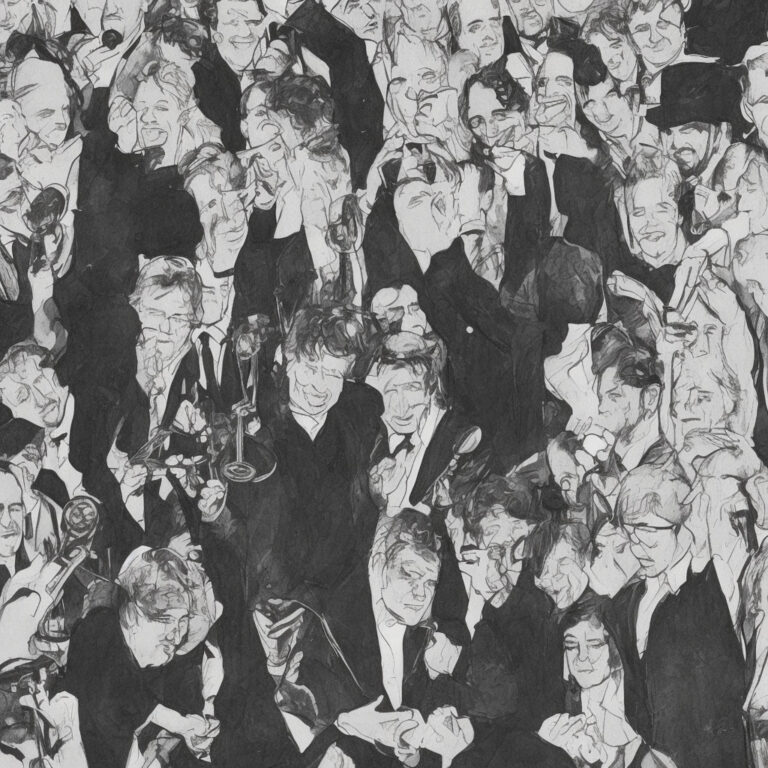
Since its release, “One” has consistently been ranked high among U2’s masterpieces, earning several accolades and featuring in various media platforms over the years. The song has been a staple on numerous “best-of” lists in the realm of music, including the prestigious Rolling Stone magazine’s “The 500 Greatest Songs of All Time,” where it ranks at an impressive #36.
The success of “One” extended beyond the realm of music and into the world of television and film. The song has made appearances in episodes of popular TV shows such as “Friends” and “Entourage,” as well as movies like “Moulin Rouge!” and “Lemonade Mouth.” Additionally, the song’s emotionally charged nature has made it a popular choice for usage in various charity campaigns, documentaries, and commercials, further cementing its status as an iconic piece of music.
Besides its popularity in media, “One” has also inspired numerous cover versions by artists from various genres over the years. Some of the most notable covers include renditions by Johnny Cash, Mary J. Blige, and Damian Rice. These renditions showcase not only the malleability of the song in adapting to different musical styles but also its enduring appeal to musicians and audiences alike.
In recognition of its cultural and artistic significance, “One” has received several awards over the years, including the Ivor Novello Award for Best Song Musically and Lyrically in 1993. The song’s powerful lyrics and U2’s iconic sound have made it a favorite among fans and critics alike, and it remains a standout track in their extensive discography.
Overall, the success and legacy of “One” are a testament to the impact a single song can have in shaping the musical landscape and touching the lives of listeners around the world. As U2’s “One” continues to inspire, entertain, and move audiences, it serves as a shining example of the power of music and the lasting influence of an iconic band like U2.
Delving into the Musical Structure
“One” by U2 is a song that showcases the band’s ability to blend heartfelt lyrics with a powerful musical arrangement. The song is written in the key of A Major, which contributes to its overall uplifting and anthemic feel. It is composed in a 4/4 time signature, with a tempo of approximately 92 beats per minute (BPM), giving it a moderate pace that allows the listener to fully absorb and appreciate the musical and lyrical layers.
The chord structure of “One” is relatively simple, yet effective, in creating an emotional connection with the listener. The verses follow a progression of A5 – Asus2 – A, while the pre-chorus introduces a shift to Dsus2 – D – A. The chorus, which is arguably the most memorable part of the song, follows a progression of E – D – A – C#m – Bm7, providing a sense of resolution and emotional release.
One noticeable aspect of the song is the use of dynamics to build tension and create interest. The song begins with a clean electric guitar playing arpeggios, accompanied by a sparse drum pattern that utilizes the toms and snare. As the song progresses, the guitar tone becomes more overdriven, and the drums gradually incorporate more elements, such as cymbals and hi-hats, culminating in a full, powerful sound during the chorus.
The Edge’s distinctive guitar playing style is a highlight of “One.” His use of delay and reverb effects creates an atmospheric, almost ethereal quality to the guitar parts, while his choice of chord voicings adds to the overall richness of the arrangement. The bass, played by Adam Clayton, complements the guitar parts by providing a solid rhythmic foundation and filling out the lower end of the frequency spectrum.
Bono’s vocal performance on “One” is a testament to his emotive and expressive abilities as a singer. He navigates the range of the song with ease, moving from a gentle croon in the verses to a powerful, soaring delivery in the chorus. His use of dynamics and vocal tone adds another layer of emotional depth to the song, making it a truly compelling listening experience.
In summary, “One” by U2 is a masterclass in songwriting, combining a simple yet effective chord structure, powerful dynamics, and an emotive vocal performance to create a timeless and universally appealing piece of music. Its musical structure serves to enhance the song’s message, proving that sometimes, less is more when it comes to creating a truly memorable and enduring song.



